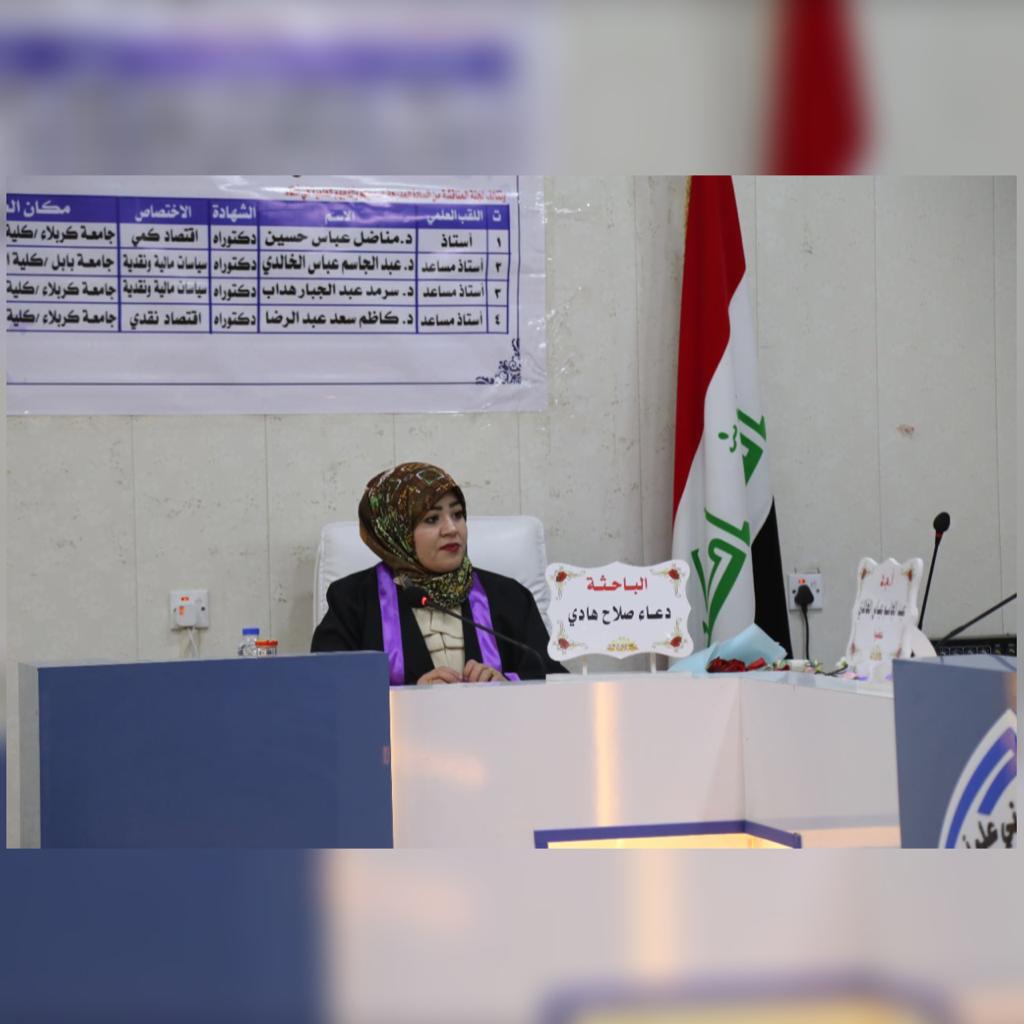Measurement and Analysis of the relationship between liquidity and credit capacity
“An applied study of a sample of Iraqi commercial banks”
Thesis submitted to the Council of the College of Administration and Economics at the University of Karbala
It is part of the requirements for obtaining a master’s degree in economics
Submitted by the student
Doaa Salah Hadi
And the supervision By
Assistant. Professor Dr
Kazem Saad Al-Araji
Abstract
The research aims to reveal the relationship between cash liquidity and credit capacity in Iraqi commercial banks, where the issue of cash liquidity is one of the main and important topics in commercial banks and their preoccupation in their daily work and friction with customers, and the credit capacity has a distinguished role in the development of banking work as it contributes to the achievement of many goals In the economies of countries and the increase in production, therefore, the main goal of the bank is (profitability). On the contrary, the bank may retain liquidity that exceeds its need, which results in the case of incorrect use of available resources, and good management of liquidity leads to the bank being able to exploit appropriate opportunities to achieve maximum profit and create opportunities Investment and includes the idea of research by analyzing the relationship of cash liquidity in banks, the study sample and the credit capacity, especially after three Iraqi commercial banks were chosen (Bank of Baghdad – Middle East Investment Bank – Iraqi Commercial Bank) and knowing the type of relationship and analyzing it according to statistical methods to achieve the goals and hypotheses of the research. Especially after the research hypothesis was formulated for this, and the relationship was tested by the Trace test and the Engen root test The maximum characteristic value (Maximum eigenvalue) and the Todayamomoto causal model. The research reached a set of conclusions, the most important of which appeared the results of the analysis of the three standard model using the Todayamomoto model between the independent variable (cash in the funds of the three banks mentioned) does not affect the dependent variables (cash credit and pledge credit) .
A set of recommendations was also formulated, the most important of which is the need for the banks under study to strengthen their financial position through increasing interest in cash liquidity to achieve acceptable bank credit ratios.































































